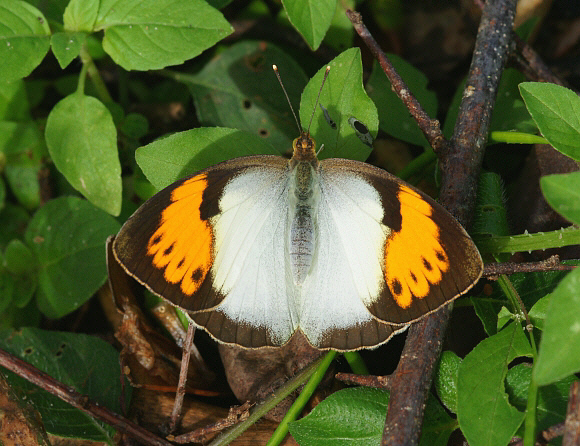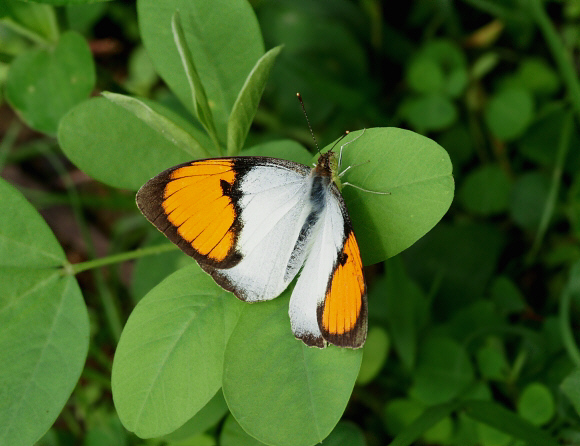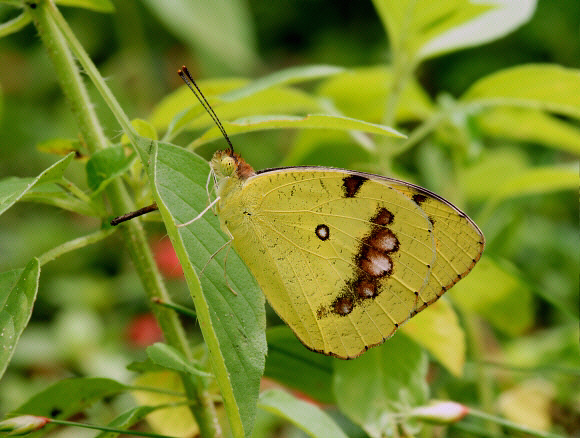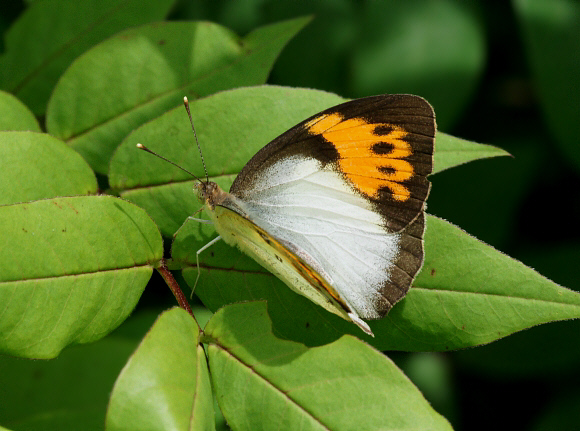
Introduction
There are 10 species in the genus Ixias, all of which are Oriental in distribution.
Males have orange wing tips and broad dark brown margins, on either a yellow or white ground colour, depending on the species. Females are similar but have more extensive dark markings, and in some species e.g. flavipennis and paluensis they lack the orange patches. The underside of the wings in both sexes of all species is yellow, with a band of dark spots. The latter are much more pronounced in the wet season forms.
Several Ixias species are endemic to islands in south-east Asia e.g. kuehni on Wetar, flavipennis on Sumatra, piepersii and paluensis on Sulawesi, and vollenhovii on Timor. The commonest and most widespread member of the genus is pyrene which is distributed from Pakistan to Taiwan, and south through the Malaysian peninsula to Sumatra, Borneo and the Philippines.
Ixias marianne is confined to India and Sri Lanka.

Habitats
This species inhabits Acacia scrub, savannah / woodland mosaics, open areas within dry forest, and beach hinterlands. It is a lowland species found between sea level and about 500m.

Lifecycle
The larval foodplant is Capparis ( Capparidaceae ).

Adult behaviour
Both sexes tend to fly quite close to the ground, fluttering around bushes. Early in the morning they often bask on low foliage, with the wings half open. If disturbed by humans or birds they react by flying into long grasses or tangled undergrowth, where they hide low down, keeping their wings tightly closed. Further disturbance causes them to retreat deeper into the undergrowth, where they are almost impossible to flush out.

